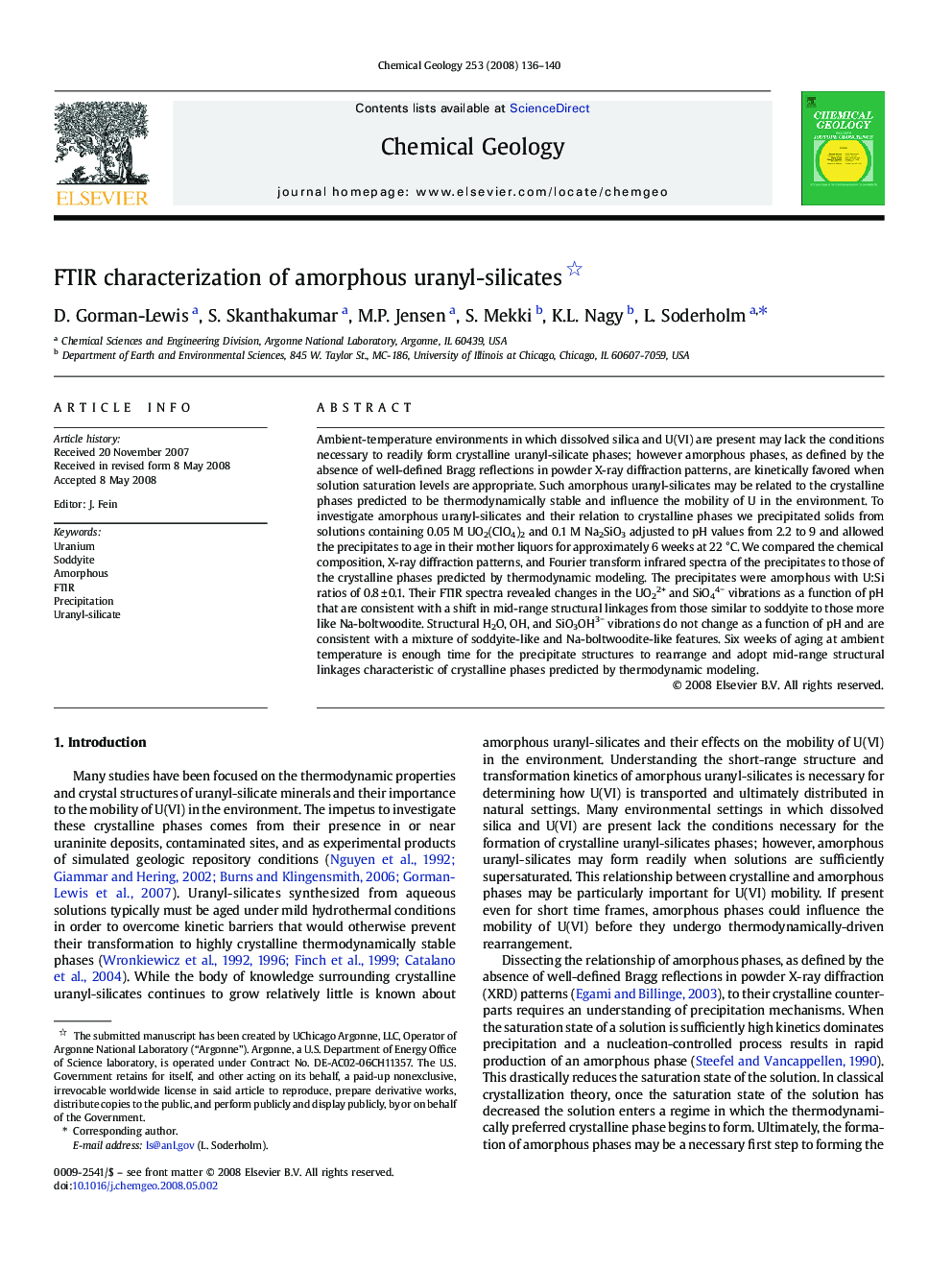| Article ID | Journal | Published Year | Pages | File Type |
|---|---|---|---|---|
| 4700647 | Chemical Geology | 2008 | 5 Pages |
Ambient-temperature environments in which dissolved silica and U(VI) are present may lack the conditions necessary to readily form crystalline uranyl-silicate phases; however amorphous phases, as defined by the absence of well-defined Bragg reflections in powder X-ray diffraction patterns, are kinetically favored when solution saturation levels are appropriate. Such amorphous uranyl-silicates may be related to the crystalline phases predicted to be thermodynamically stable and influence the mobility of U in the environment. To investigate amorphous uranyl-silicates and their relation to crystalline phases we precipitated solids from solutions containing 0.05 M UO2(ClO4)2 and 0.1 M Na2SiO3 adjusted to pH values from 2.2 to 9 and allowed the precipitates to age in their mother liquors for approximately 6 weeks at 22 °C. We compared the chemical composition, X-ray diffraction patterns, and Fourier transform infrared spectra of the precipitates to those of the crystalline phases predicted by thermodynamic modeling. The precipitates were amorphous with U:Si ratios of 0.8 ± 0.1. Their FTIR spectra revealed changes in the UO22+ and SiO44− vibrations as a function of pH that are consistent with a shift in mid-range structural linkages from those similar to soddyite to those more like Na-boltwoodite. Structural H2O, OH, and SiO3OH3− vibrations do not change as a function of pH and are consistent with a mixture of soddyite-like and Na-boltwoodite-like features. Six weeks of aging at ambient temperature is enough time for the precipitate structures to rearrange and adopt mid-range structural linkages characteristic of crystalline phases predicted by thermodynamic modeling.
